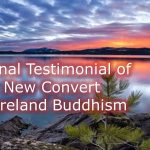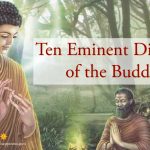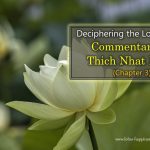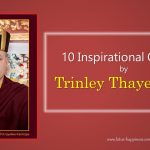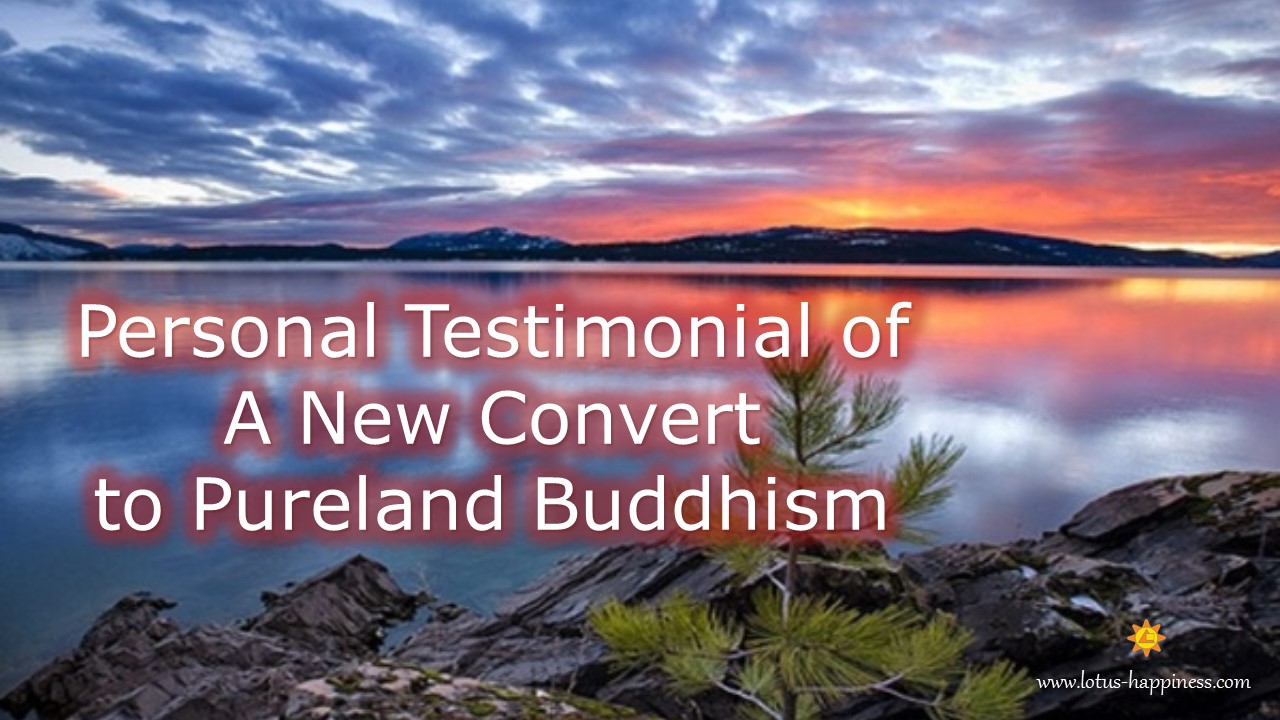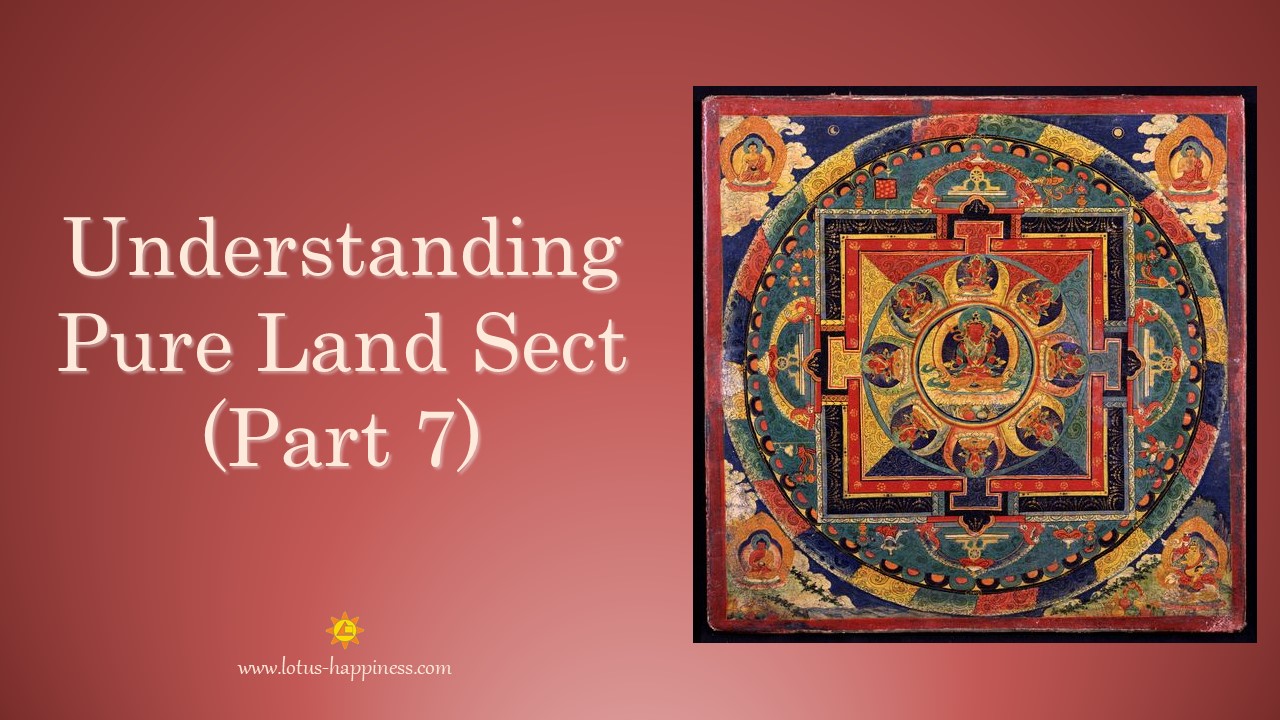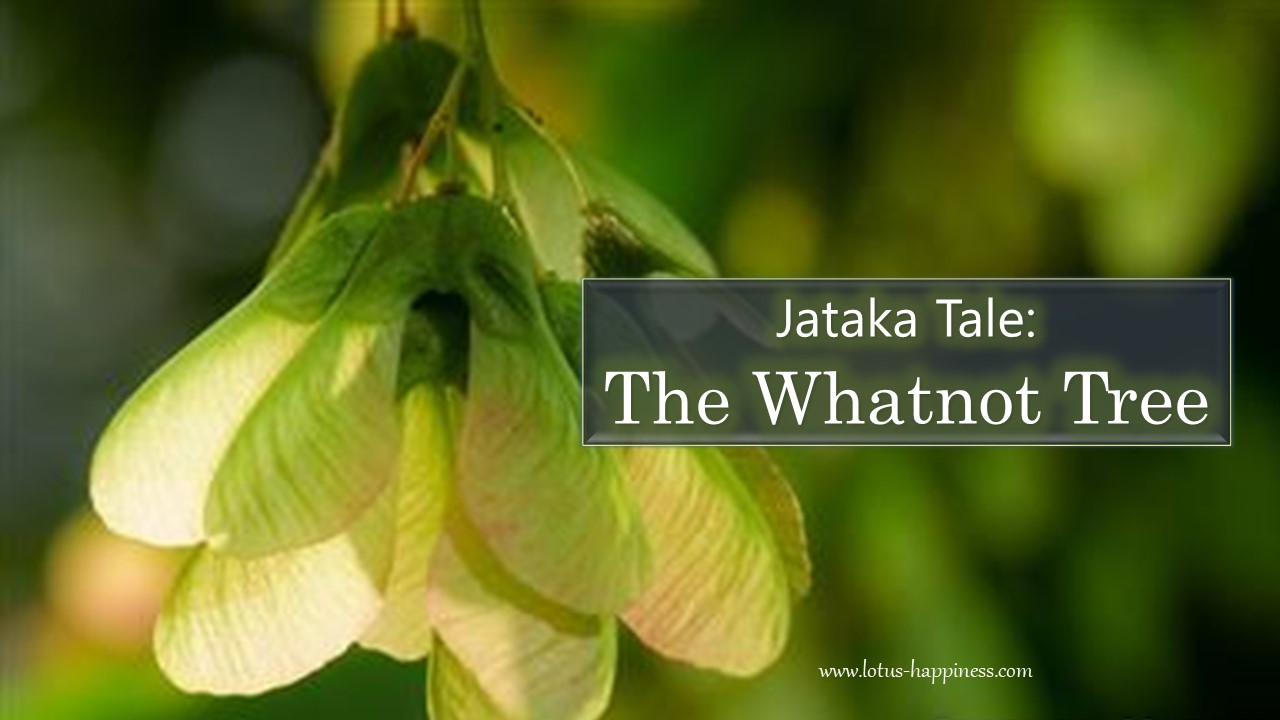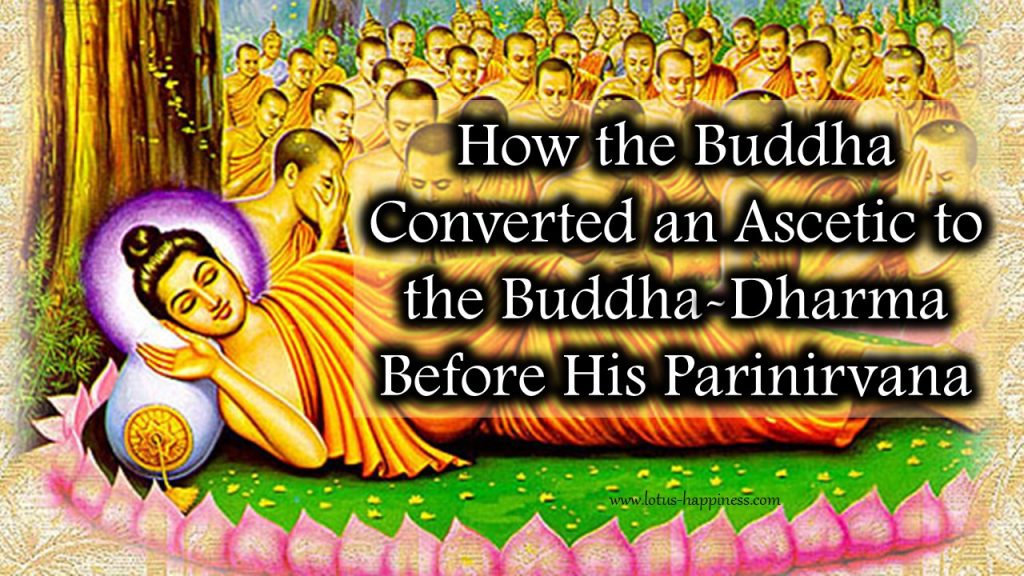
While the Mallas were paying their last respects to the Buddha, a wandering ascetic named Subhadra heard that the Buddha was to attain final nirvana that very night. Knowing that it is hard to meet the Buddha, Subhadra hurried to see him in order to resolve his doubts about the spiritual life.
So Subhadra went to the Mallas’ sal-grove, to where the Venerable Ananda was, and told him what he had thought: “Reverend Ananda, may I be permitted to see the ascetic Gautama?”
Ananda replied: “Enough, friend Subhadra, do not disturb the Tathagata, the Lord is weary.” Thus, Subhadra made his request a second and a third time, yet Ananda still refused it.
When the Buddha overheard the conversation between Ananda and Subhadra, he called Ananda: “Enough, Ananda, do not hinder Subhadra. Let him see the Tathagata. For whatever Subhadra asks me he will ask in quest of enlightenment and not to annoy me, and what I say in reply to his questions he will quickly understand.”
Then Ananda said: “Go in, friend Subhadra, the Lord gives you leave.”
Subhadra approached the Lord, exchanged courtesies with him, and sat down to one side, saying: “Venerable Gautama, all those ascetics and brahmins who have orders and followings, who are teachers, well known and famous as founders of schools, and popularly regarded as saints, like Purana Kashyapa, Maskarin Goshali, Ajita Keshakambala, Kakuda Katyayana, Samjayin Vairatiputra, and Nigrantha Jnatiputra – have they all realized the truth as they all make out, or have none of them realized it, or have some of them realized it and some not?”
What Subhadra asks in regard to the six teachers of non-Vedic doctrines in the Buddha’s time is the same question that many people now wonder about contemporary religions and philosophies. Who is correct? Are all of them, only some of them, or none of them correct? And more importantly, which path leads its adherents away from suffering to true everlasting happiness? Some people believe that the Buddha taught that all paths are different approaches to the same truth. But this is not actually what the Buddha taught. His actual answer was much more unequivocal and demanding:
“Enough, Subhadra, never mind whether all, or none, or some of them have realized the truth. I will teach you Dharma, Subhadra. Listen, pay close attention, and I will speak.” “Yes, Lord”, said Subhadra and the Lord said:
“In whatever Dharma and discipline the noble eightfold path is not found, no ascetic is found of the first, the second, the third or the fourth grade. But such ascetics can be found, of the first, second, third, and fourth grade in a Dharma and discipline where the noble eightfold path is found. Now, Subhadra, in this Dharma and discipline the noble eightfold path is found, and in it are to be found ascetics of the first, second, third, and fourth grade. Those other schools are devoid of [true] ascetics; but if in this one the monks were to live the life to perfection, the world would not lack arhats.”
At first, the Buddha sets aside the claims and counter claims of his contemporaries in order to focus positively on the Dharma itself. The Buddha points out that in order to become an ascetic of one of the four grades, one must follow the noble eightfold path: right view, right intention, right speech, right action, right livelihood, right effort, right mindfulness, and right concentration. The ascetics of the four grades are the stream-enterers who will attain nirvana within seven lifetimes within the realm of desire, the once-returners who will attain it within one more lifetime within the realm of desire, the non-returners who will be reborn in the pure abodes of the realm of form and there attain nirvana if they do not do it within the present lifetime, and the arhats who attain nirvana in their present lifetime. Without following the eightfold path, one cannot attain nirvana, true freedom from the sufferings of birth and death. Apparently Subhadra accepts this premise. Therefore, none of the Buddha’s contemporaries were teaching the correct path because none of them were teaching the noble eightfold path.
Without following the eightfold path, one cannot attain nirvana, true freedom from the sufferings of birth and death. Apparently Subhadra accepts this premise. Therefore, none of the Buddha’s contemporaries were teaching the correct path because none of them were teaching the noble eightfold path.
Is this a sectarian claim on the part of the Buddha, that only his teaching is correct and leads to liberation? Perhaps, or perhaps the noble eightfold path could be viewed as a universal principle like gravity. The Buddha did not invent it; rather, he discovered or awakened to the fact that attaining liberation from suffering involves the practice and fulfillment of the noble eightfold path.
The noble eightfold path is not just the teaching of the Buddha for Buddhists, but a nonsectarian description of enlightened conduct that transcends the proprietary concerns of any tribe, nation, or sect.
The Buddha was the first to teach it so clearly and concisely in our present human history, but there have been other Buddhas in other times and places who have awakened and taught it to others, and in times when there were no Buddhas there were privately-awakened ones who discovered it on their own though they did not teach it or establish a community to uphold it and pass it on to others. Many of the elements of the noble eightfold path may in fact be found in other religions and philosophies, though perhaps not all, or not as deeply, or mixed in with extraneous ideas and beliefs that obscure it. Right view, in particular, is something that is usually not found as the Buddha taught it. The Buddha present the noble eightfold path here, however, not as something that only the Buddha or Buddhists can teach, but rather as an objective criteria by which to measure any spiritual path. Those who are in accord with it will attain liberation, those who don’t, will not. It is not even a question of being a Buddhist or not.
Subhadra seems to realize that the Buddha has not chosen sides in the ongoing philosophical debates of that time, nor has he made any egoistic claims or entered into any metaphysical speculations or made any appeals to blind faith. Rather, the Buddha has presented a reliable and practical guide to liberation that can be put into practice in order to realize the truth of it for oneself. Subhadra is suitably impressed and requests to become a monk right there and then. In fact, he uses the formula that signals the insight associated with stream-entry.
At this the wanderer Subhadra said: “Excellent, Lord, excellent! It is as if someone were to set up what had been knocked down, or to point out the way to one who had got lost, or to bring an oil lamp into a dark place, so that those with eyes could see what was there. Just so the Blessed Lord has expounded the Dharma in various ways. And I, Lord, go for refuge to the Blessed Lord, the Dharma, and the Sangha. May I receive the going forth in the Lord’s presence! May I receive ordination!”
The Buddha points out that it is their custom that those who wish to become members of the monastic Sangha who are coming from other schools of thought must first go through a four month probation. However, in Subhadra’s case, the probationary period is waived, though Subhadra states that he wished to become a monk even if he had to wait four years. Subhadra is then given the “going forth” ceremony of a novice and immediately after ordained as a monk and through diligent practice he later attained nirvana.
Then Subhadra received the going forth in the Lord’s presence, and the ordination. And from the moment of his ordination the Venerable Subhadra, alone, secluded, unwearying, zealous and resolute, in a short time attained to that for which young men of good family go forth from the household life into homelessness, that unexcelled culmination of the holy life, having realized it here and now by his own insight, and dwelt therein: “Birth is destroyed, the holy life has been lived, what had to be done has been done, there is nothing further here.”
Venerable Subhadra became another of the arhats. He was the last personal disciple of the Lord.
Adapted from Fraught with Peril.


